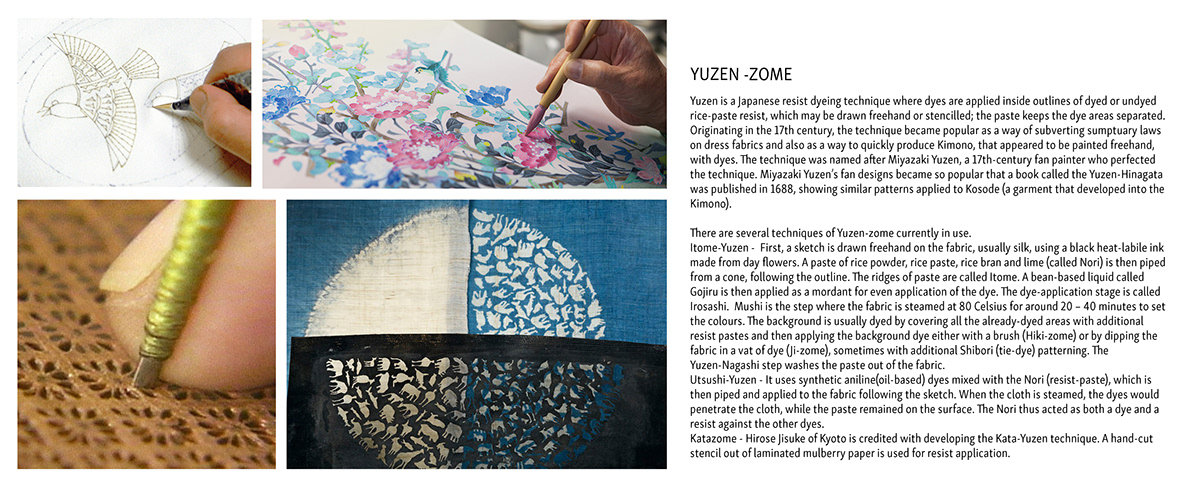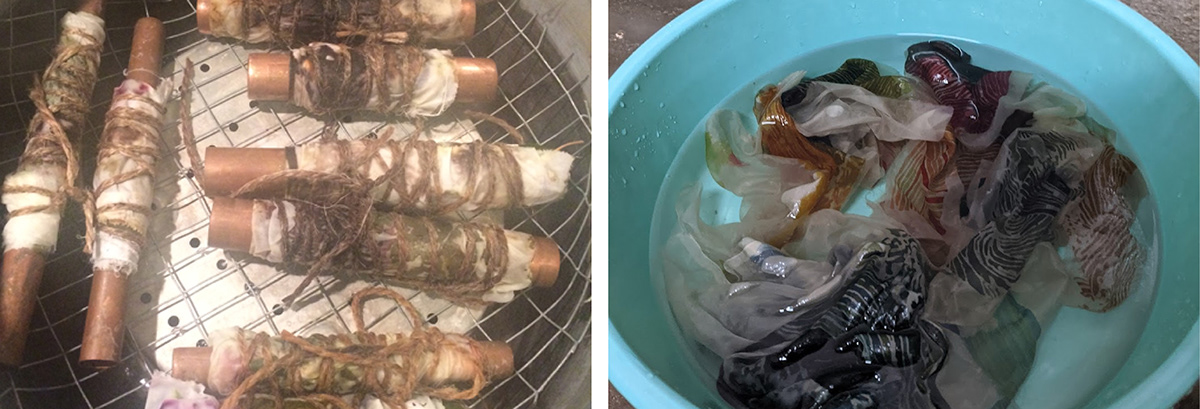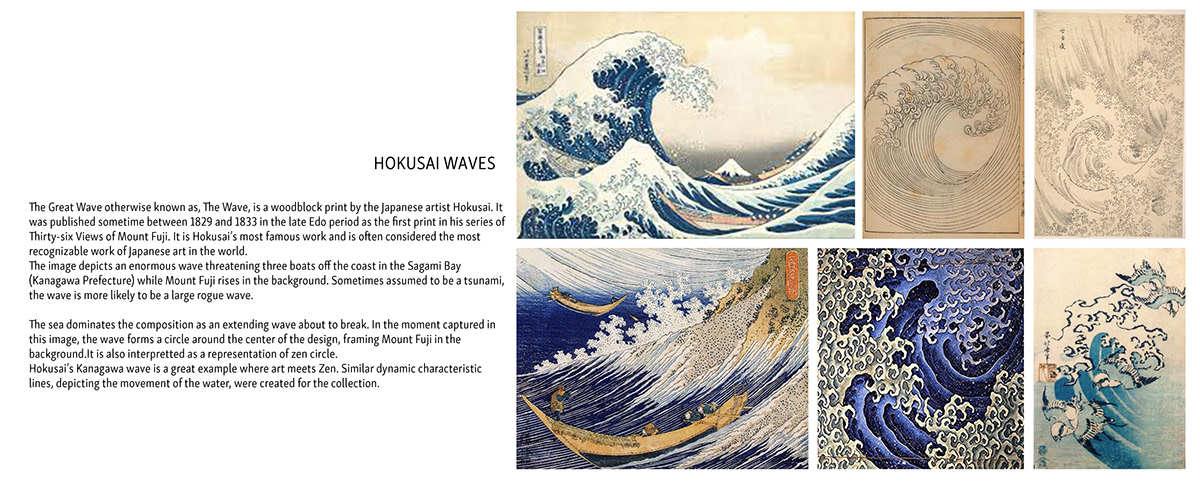COLOURS OF ZEN - PART 1
A TRAINING WORKSHOP FOR YUZEN-ZOME















OUTCOME OF THE WORKSHOP

COLOURS OF ZEN - PART 2
THE APPAREL COLLECTON


LINE- AN ESSENTIAL DESIGN ELEMENT
The line is one of the most essential elements of design. It is often the starting point for all artistic expression. It always has more length than thickness, and can be broken, unbroken, or implied. A line can be vertical, diagonal, horizontal and even curved. It can be of any width, size, shape, position, direction, interval, or density.
A line can depict various other elements of design, colour, texture, and movement, by altering its intensity, arrangement and movement. Though basic in appearance, lines can control the viewer’s thoughts and emotions and lead a viewer’s eye through space. For these surfaces lines has been used to create virtual textures depicting the characteristic waves and motion of water inspired from the Hokusai waves.
Traditionally the resist lines are used as outlines to hold the dye within. These resisted lines were also made to be a part of the design and surfaces were developed such that they would look incomplete without these white, resisted lines.





The apparel collection consists of 9-10 garments in 4 ensembles. The collection consists of pants and anti-fit, Kimono-inspired shirts and jackets that justifies the inspiration and technique used. The placement of surfaces in the garment was visualized in such a way that it adds more fluidity to the dynamic illustrations.








FINAL SURFACE PLACEMENTS, SILHOUETTES AND COLOURS


After finalizing the base fabric (silk habotai), silhouette, surface design placement and colorways for the collection, sampling was started. The final swatches were hand-resisted and hand-painted by the trained craftsmen. Though there were trained craftsmen to carry out the garment sampling and production, the whole process was time-consuming. Considering the commercial aspects, some amount of uniformity had to be maintained.
To make the process more time-efficient, production-friendly and to maintain uniformity of resist application, screens were made.
The placement of the screen for resist application on individual garments was planned.







The introduction of Yuzen-zome (resist dyeing) as part of the production facilities at Yavi was beneficial because the surface design possibilities/outcome that can be achieved with resist dyeing aligns well with the brand’s aesthetics. Impressionist prints being the signature element of Yavi, this technique gives scope to create artistic, painterly textures with hand painting. It gives the product a value-added identity and yet stays authentic to the brand language.
This project focused on establishing the requirements for this unit to function seamlessly. The workshop was followed by developing/mapping an apparel collection.
Though a collection was developed, sampling/production of it was not the priority. A few pieces were sampled to demonstrate how colors and surface placements, visualized by the designer, could be recreated. The focus was on showing the craftsmen the possibilities and how to recreate a specific visualized possibility. Though the craftsmen have not mastered the technique, they can execute the basics seamlessly and achieve the desired results.
As a way forward, the developed collection can be sampled/produced. New surfaces/collections can be developed, keeping in mind the possibilities and constraints of the technique. Surfaces developed with resist dyeing can be combined with other surface techniques and a myriad of possibilities can be explored in both home and apparel.
Guided by : Swasti Singh Ghai
Sponsor : Yavi Design Studio






